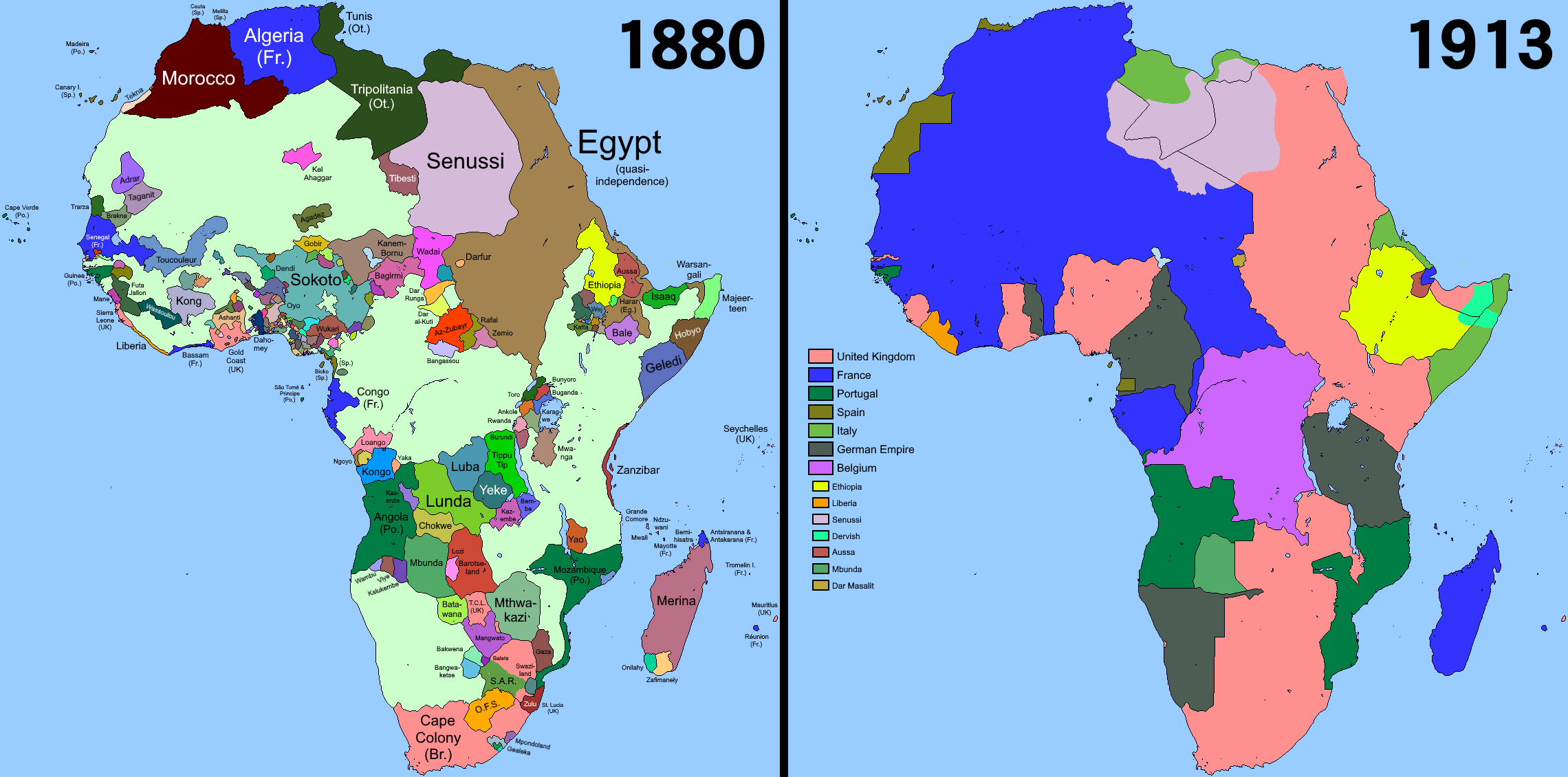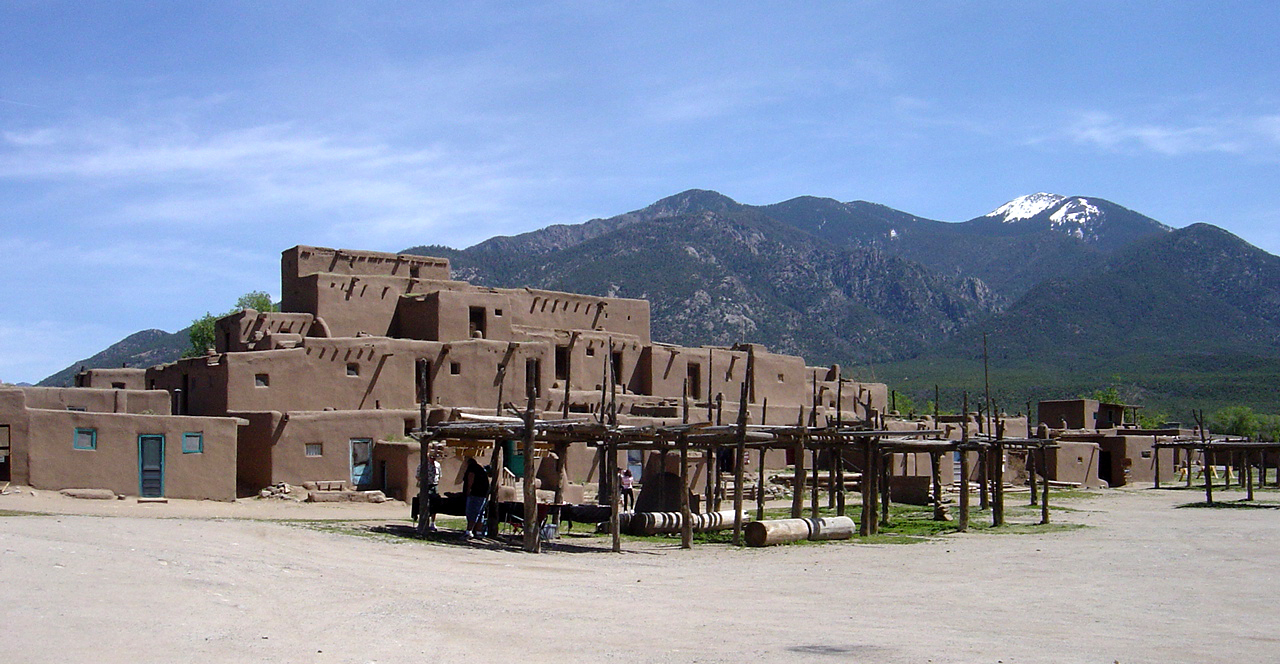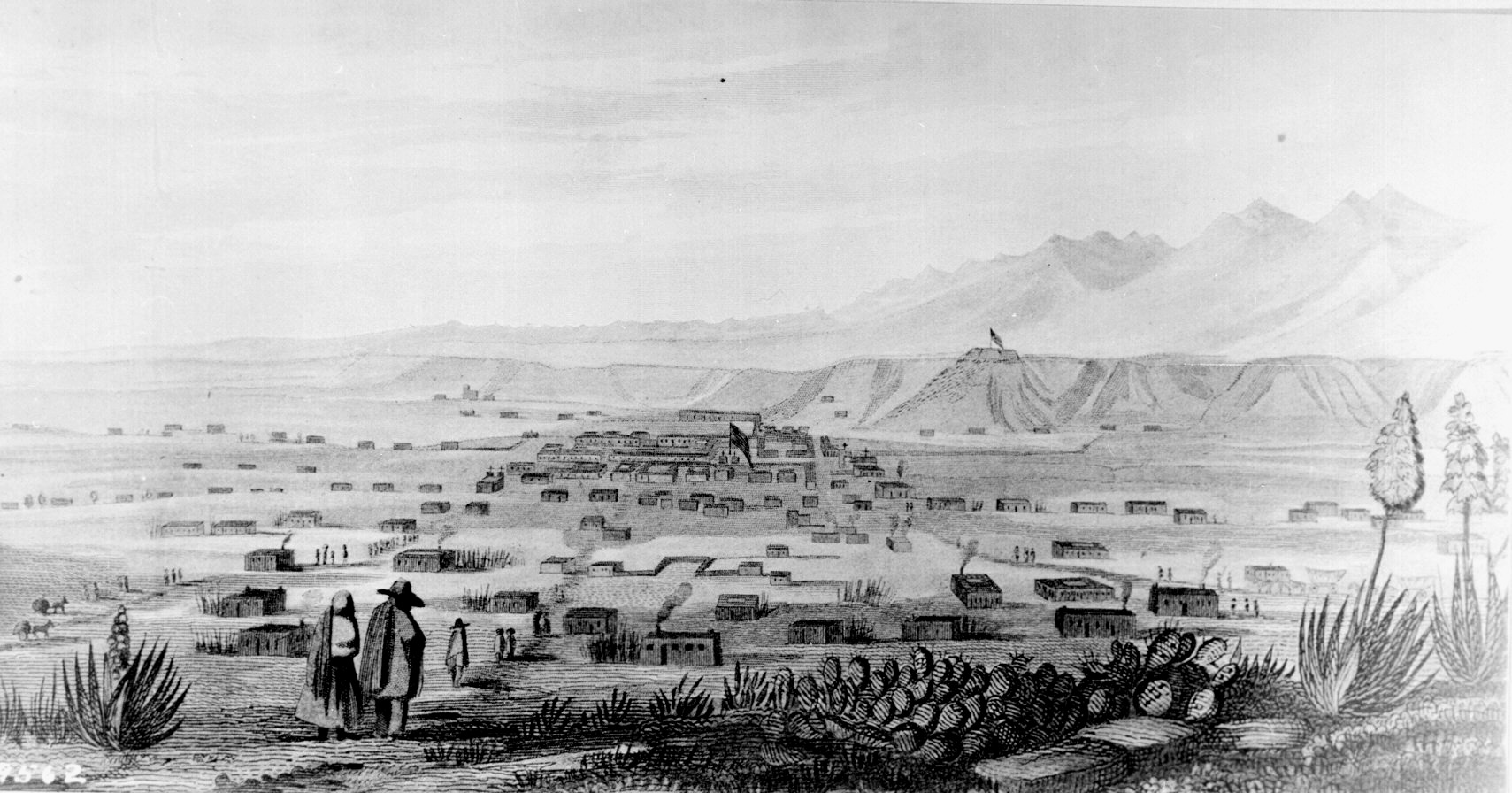|
Genízaro
(or Genizaros) was the name for detribalized Indigenous people from the 17th to 19th century in the Spanish colony of New Mexico and neighboring regions of the American Southwest. Genízaros were usually women and children who had been captured in war by the Spanish or purchased from Indian tribes who had held them captive as slaves. To circumvent Spanish laws forbidding slavery, the purchaser (or rescuer) of a genízaro had the obligation to introduce them to Christianity and Spanish customs. Genízaros worked as indentured servants, shepherds, and laborers. They occupied the lowest rung of status-conscious Spanish society in New Mexico but slowly assimilated and intermarried into Spanish and later Mexican (1821-1846) and American (1846-present day) society. The descendants of genízaros are also called genízaros and the word has become a term of pride for the descendants of the original Indian captives and slaves. In 1793, genízaros were estimated to have comprised up to one ... [...More Info...] [...Related Items...] OR: [Wikipedia] [Google] [Baidu] |
Detribalized
Detribalization is the process by which persons who belong to a particular indigenous ethnic identity or community are detached from that identity or community through the deliberate efforts of colonizers and/or the larger effects of colonialism. Detribalization was systematically executed by detaching members from communities outside the colony so that they could be " modernized", Westernized, and, in most circumstances, Christianized for the prosperity of the colonial state. Historical accounts illustrate several trends in detribalization, with the most prevalent being the role that Western colonial capitalists played in exploiting Indigenous people's labor, resources, and knowledge, the role that Christian missionaries and the colonial Christian mission system played in compelling Christian membership in place of Indigenous cultural and religious practices, instances of which were recorded in North America, South America, Africa, Asia, and Oceania, and the systemic conditio ... [...More Info...] [...Related Items...] OR: [Wikipedia] [Google] [Baidu] |
New Mexico
New Mexico is a state in the Southwestern United States, Southwestern region of the United States. It is one of the Mountain States of the southern Rocky Mountains, sharing the Four Corners region with Utah, Colorado, and Arizona. It also borders the state of Texas to the east and southeast, Oklahoma to the northeast, and shares Mexico-United States border, an international border with the Mexican states of Chihuahua (state), Chihuahua and Sonora to the south. New Mexico's largest city is Albuquerque, and its List of capitals in the United States, state capital is Santa Fe, New Mexico, Santa Fe, the oldest state capital in the U.S., founded in 1610 as the government seat of Santa Fe de Nuevo México, Nuevo México in New Spain. It also has the highest elevation of any state capital, at . New Mexico is the List of U.S. states and territories by area, fifth-largest of the fifty states by area, but with just over 2.1 million residents, ranks List of U.S. states and terri ... [...More Info...] [...Related Items...] OR: [Wikipedia] [Google] [Baidu] |
Carnuel, New Mexico
Carnuel is a census-designated place (CDP) in Bernalillo County, New Mexico, United States. The population was 1,232 at the 2010 Census. It is part of the Albuquerque Metropolitan Statistical Area. Name Robert Hixson Julyan reports that name of the community, which has been spelled both Carnuel and Carnué, likely derives from the Tiwa word for "badger place." This hypothesis is supported by indigenous residents. History Carnuel (full name San Miguel de Loredo de Carnué) is east of the original center of the city of Albuquerque. The town was created in 1763 to defend Albuquerque from the raids of Comanche, Kiowa, and Plains Apache American Indians. The town is located at the mouth of Tijeras Canyon, a strategic and natural corridor between the hostile Indians of the Great Plains and the Spanish settlements of the Rio Grande valley. Nineteen men some with families, comprised the first settlers at Carnuel. They were mostly from the lower castas of Spanish society, "mest ... [...More Info...] [...Related Items...] OR: [Wikipedia] [Google] [Baidu] |
New Mexico Legislature
The New Mexico Legislature () is the legislative branch of the state government of New Mexico. It is a bicameral body made up of the New Mexico House of Representatives and the New Mexico Senate. History The New Mexico Legislature was established when New Mexico officially became a state and was admitted to the union in 1912. In 1922, Bertha M. Paxton became the first woman elected to the New Mexico Legislature, serving one term in the House of Representatives. Session structure and operations The Legislature meets every year, in regular session on the third Tuesday in January. The New Mexico Constitution limits the regular session to 60 calendar days, every other year it is 30 days. The lieutenant governor presides over the Senate, while the Speaker of the House is elected from that body in a closed-door majority-member caucus. Both have wide latitude in choosing committee membership in their respective houses and have a large impact on lawmaking in the state. While only ... [...More Info...] [...Related Items...] OR: [Wikipedia] [Google] [Baidu] |
Indigenous People
There is no generally accepted definition of Indigenous peoples, although in the 21st century the focus has been on self-identification, cultural difference from other groups in a state, a special relationship with their traditional territory, and an experience of subjugation and discrimination under a dominant cultural model. Estimates of the population of Indigenous peoples range from 250 million to 600 million. There are some 5,000 distinct Indigenous peoples spread across every inhabited climate zone and inhabited continent of the world. Most Indigenous peoples are in a minority in the state or traditional territory they inhabit and have experienced domination by other groups, especially non-Indigenous peoples. Although many Indigenous peoples have experienced colonization by settlers from European nations, Indigenous identity is not determined by Western colonization. The rights of Indigenous peoples are outlined in national legislation, treaties and international law ... [...More Info...] [...Related Items...] OR: [Wikipedia] [Google] [Baidu] |
Comanches
The Comanche (), or Nʉmʉnʉʉ (, 'the people'), are a Native American tribe from the Southern Plains of the present-day United States. Comanche people today belong to the federally recognized Comanche Nation, headquartered in Lawton, Oklahoma. The Comanche language is a Numic language of the Uto-Aztecan family. Originally, it was a Shoshoni dialect, but diverged and became a separate language. The Comanche were once part of the Shoshone people of the Great Basin. In the 18th and 19th centuries, Comanche lived in most of present-day northwestern Texas and adjacent areas in eastern New Mexico, southeastern Colorado, southwestern Kansas, and western Oklahoma. Spanish colonists and later Mexicans called their historical territory '' Comanchería''. During the 18th and 19th centuries, Comanche practiced a nomadic horse culture and hunted, particularly bison. They traded with neighboring Native American peoples, and Spanish, French, and American colonists and settlers. As Eu ... [...More Info...] [...Related Items...] OR: [Wikipedia] [Google] [Baidu] |
Las Vegas, NM
Las Vegas, often known simply as Vegas, is a city in and the county seat of San Miguel County, New Mexico, United States. Once two separate municipalities (one a city and the other a town), both were named Las Vegas: West Las Vegas ("Old Town") and East Las Vegas ("New Town"). They are separated by the Gallinas River and retain distinct characters and separate, rival school districts. Las Vegas is home to New Mexico Highlands University, enrolling nearly 3,000 students. The population was 13,166 at the 2020 census. Las Vegas is located south of Raton, east of Santa Fe, northeast of Albuquerque, south of Colorado Springs, Colorado, and south of Denver. History Las Vegas was established in 1835 after a group of settlers received a land grant from the Mexican government. (The land had previously been granted to Luis María Cabeza de Baca, whose family later received a settlement.) The town was laid out in the traditional Spanish Colonial style, with a central plaza s ... [...More Info...] [...Related Items...] OR: [Wikipedia] [Google] [Baidu] |
Taos, New Mexico
Taos () is a town in Taos County, New Mexico, Taos County, in the north-central region of New Mexico in the Sangre de Cristo Mountains. Initially founded in 1615, it was intermittently occupied until its formal establishment in 1795 by Santa Fe de Nuevo México, Nuevo México Governor Fernando Chacón to act as fortified plaza and trading outpost for the neighboring Native Americans in the United States, Native American Taos Pueblo (the town's namesake) and Hispanos of New Mexico, Hispano communities, including Ranchos de Taos, New Mexico, Ranchos de Taos, Cañon, Taos Canyon, Ranchitos, El Prado, New Mexico, El Prado, and Arroyo Seco, New Mexico, Arroyo Seco. The town was incorporated in 1934. The 2021 estimate has a population of 6,567. Taos is the county seat of Taos County. The English name ''Taos'' derives from the native Taos language meaning "(place of) red willows". History Taos Pueblo The Taos Pueblo, which borders the north boundary of the town of Taos, has been occ ... [...More Info...] [...Related Items...] OR: [Wikipedia] [Google] [Baidu] |
Chimayo, New Mexico
Chimayo is a census-designated place (CDP) in Rio Arriba and Santa Fe counties in the U.S. state of New Mexico. The name is derived from a Tewa name for a local landmark, the hill of Tsi Mayoh. The town is unincorporated and includes many neighborhoods, called plazas or placitas, each with its own name, including El Potrero de Chimayó (the plaza near Chimayo's communal pasture) and the Plaza del Cerro (plaza by the hill). The cluster of plazas called Chimayo lies near Santa Cruz, approximately 25 miles north of Santa Fe. The population was 3,177 at the 2010 census. Background The Potrero plaza of Chimayo is known internationally for a Catholic chapel, the Santuario de Nuestro Señor de Esquipulas, commonly known as El Santuario de Chimayó. A private individual built it by 1816 so that local people could worship Jesus as depicted at Esquipulas; preservationists bought it and handed it over to the Archdiocese of Santa Fe in 1929. The chapel is managed by the Archdiocese as ... [...More Info...] [...Related Items...] OR: [Wikipedia] [Google] [Baidu] |
Santa Fe, New Mexico
Santa Fe ( ; , literal translation, lit. "Holy Faith") is the capital city, capital of the U.S. state of New Mexico, and the county seat of Santa Fe County. With over 89,000 residents, Santa Fe is the List of municipalities in New Mexico, fourth-most populous city in the state and the principal city of the Santa Fe metropolitan statistical area, which had 154,823 residents in 2020. Santa Fe is the third-largest city in the Albuquerque, New Mexico, Albuquerque–Santa Fe–Los Alamos, New Mexico, Los Alamos Albuquerque–Santa Fe–Los Alamos combined statistical area, combined statistical area, which had a population of 1,162,523 in 2020. Situated at the foothills of the Sangre de Cristo Mountains, the city is at the highest altitude of any U.S. state capital, with an elevation of 6,998 feet (2,133 m). Founded in 1610 as the capital of ', a province of New Spain, Santa Fe is the oldest List of capitals in the United States, state capital in the United States and the earliest E ... [...More Info...] [...Related Items...] OR: [Wikipedia] [Google] [Baidu] |
Bernalillo, New Mexico
Bernalillo () is a town in and the county seat of Sandoval County, New Mexico, United States. The population was 8,977 at the 2020 census. Bernalillo is part of the Albuquerque metropolitan area. History Wine Festival In the 1620s, the wine grape was introduced to Bernalillo by the Catholic priests and Spaniards. The wine industry grew rapidly since. Families were making their own wine and the vineyards were flourishing. The market dipped due to drought and floods. Slowly over time, the wine industry came back into Bernalillo and has sustained its health today, becoming a tradition and staple within the town itself. The town has embraced its wine heritage and hosts the New Mexico Wine festival yearly during each Labor Day. The event brings in people from all of New Mexico as well as tourists. The event has served as an economic development project for the area as well. Geography Bernalillo lies in the Rio Grande Valley of the Albuquerque Basin on the east bank of the Rio Gr ... [...More Info...] [...Related Items...] OR: [Wikipedia] [Google] [Baidu] |





